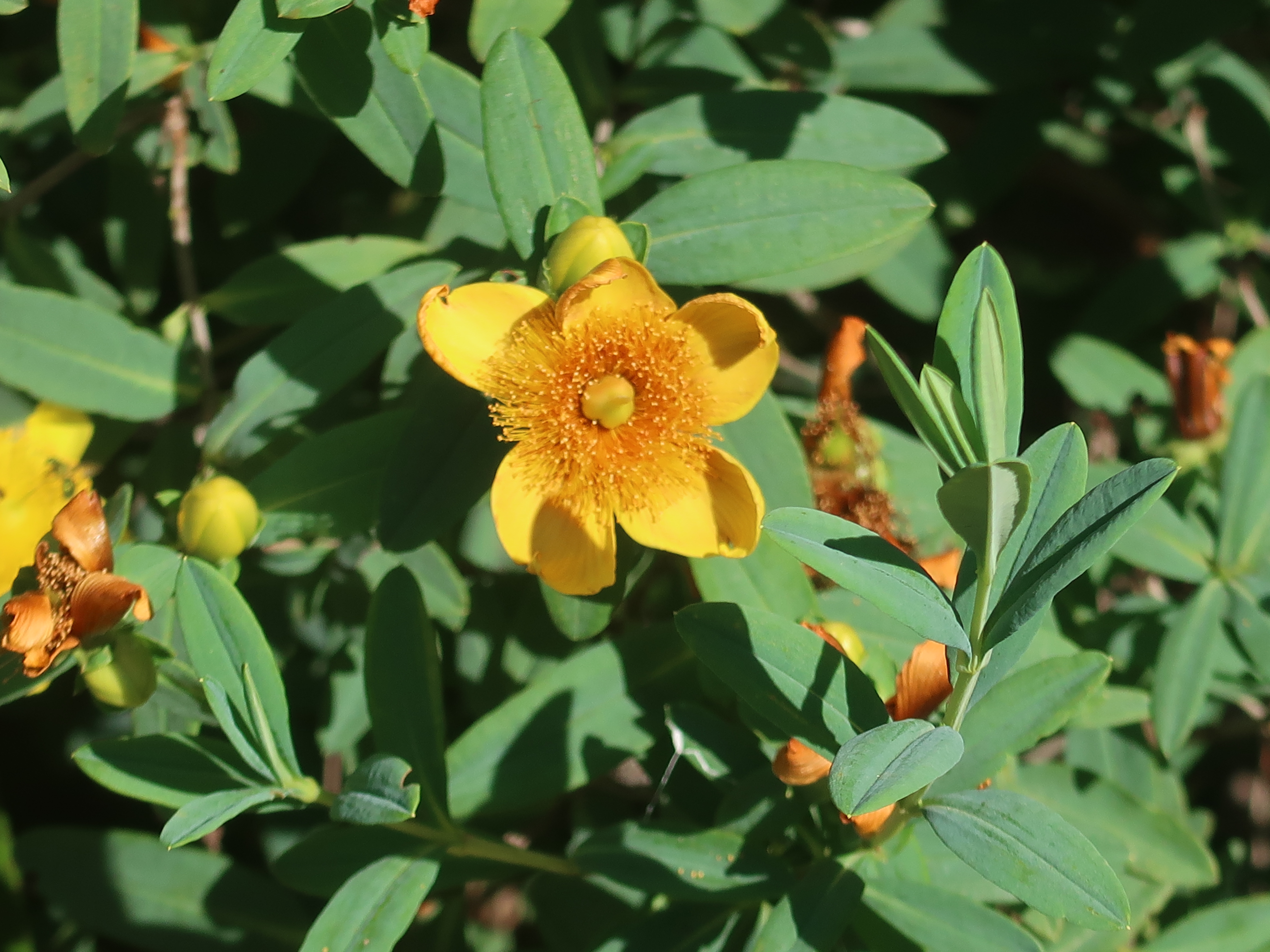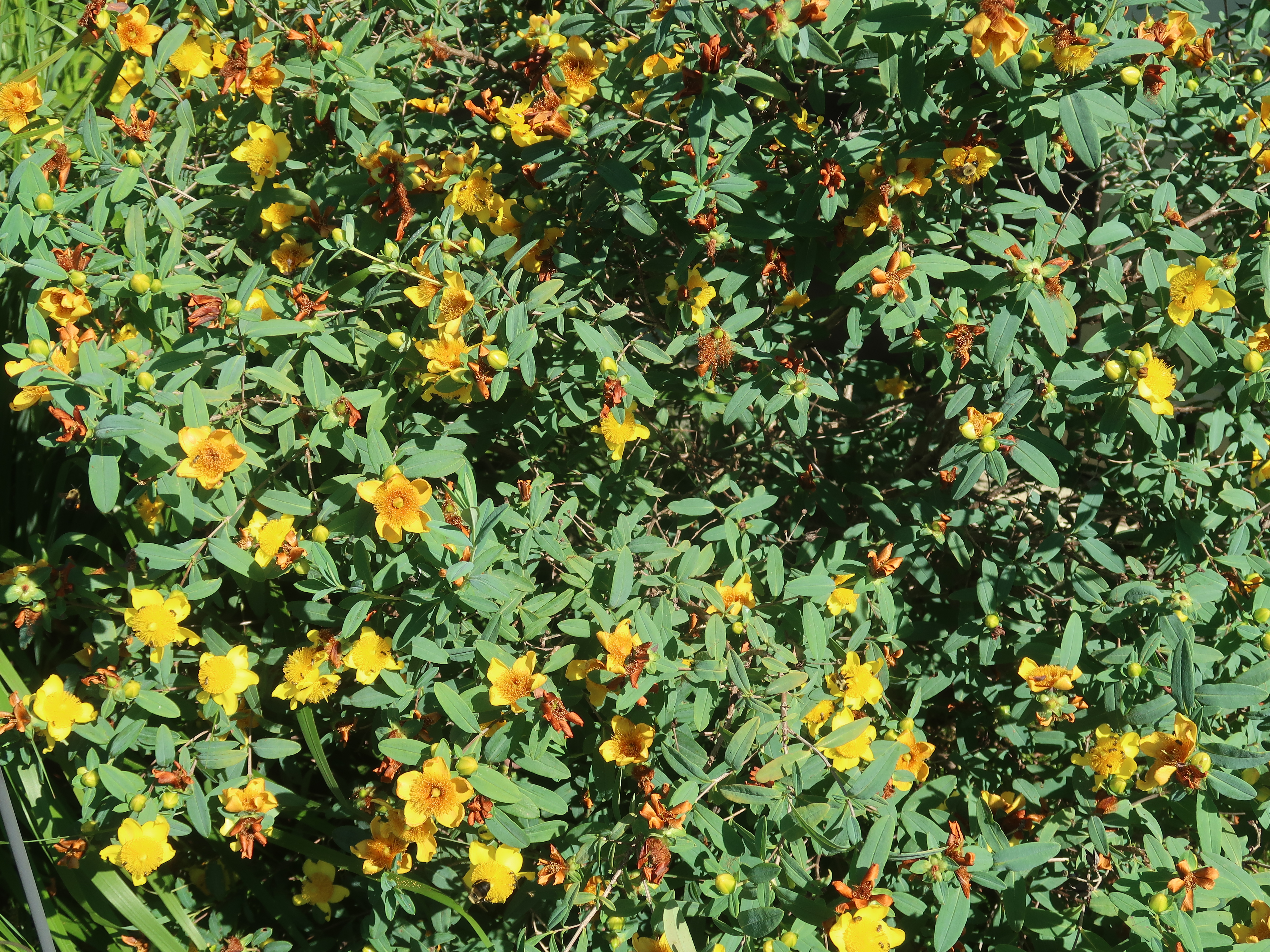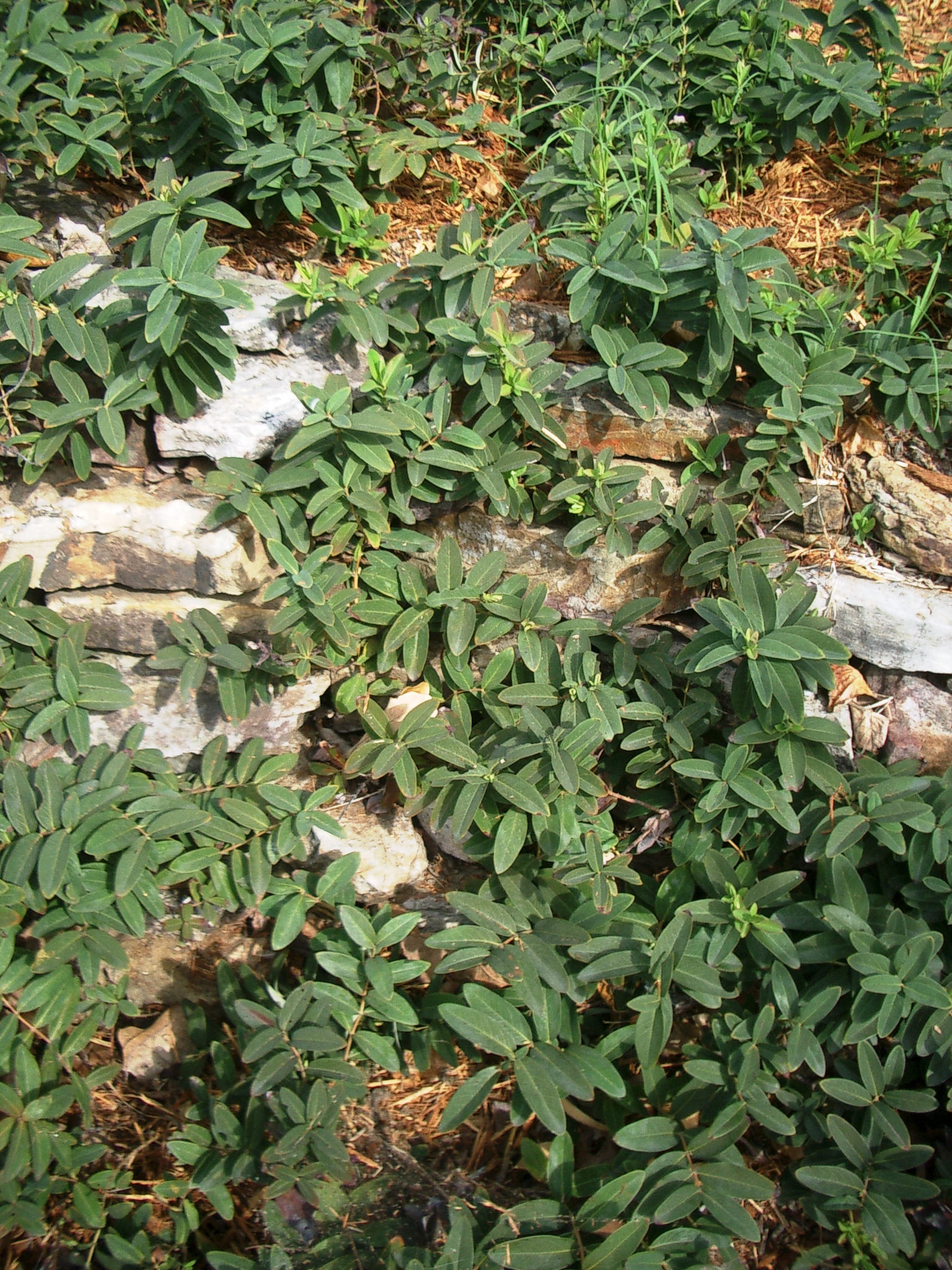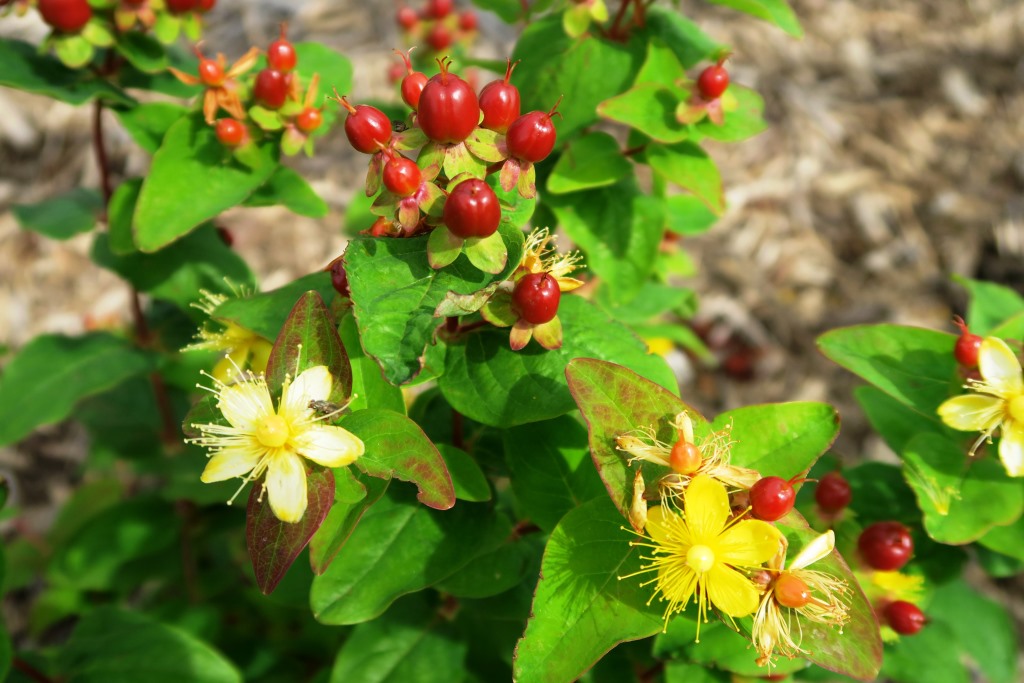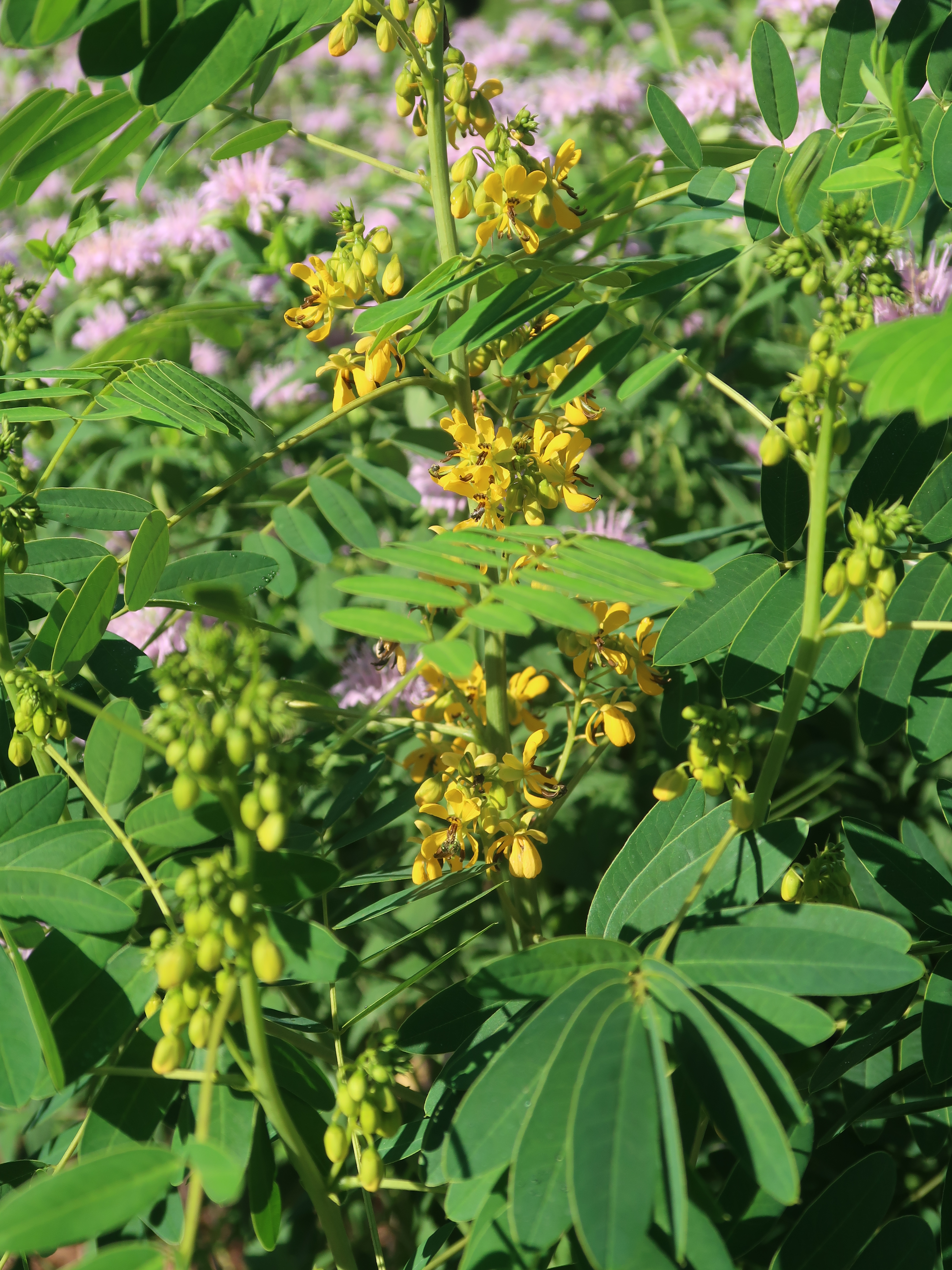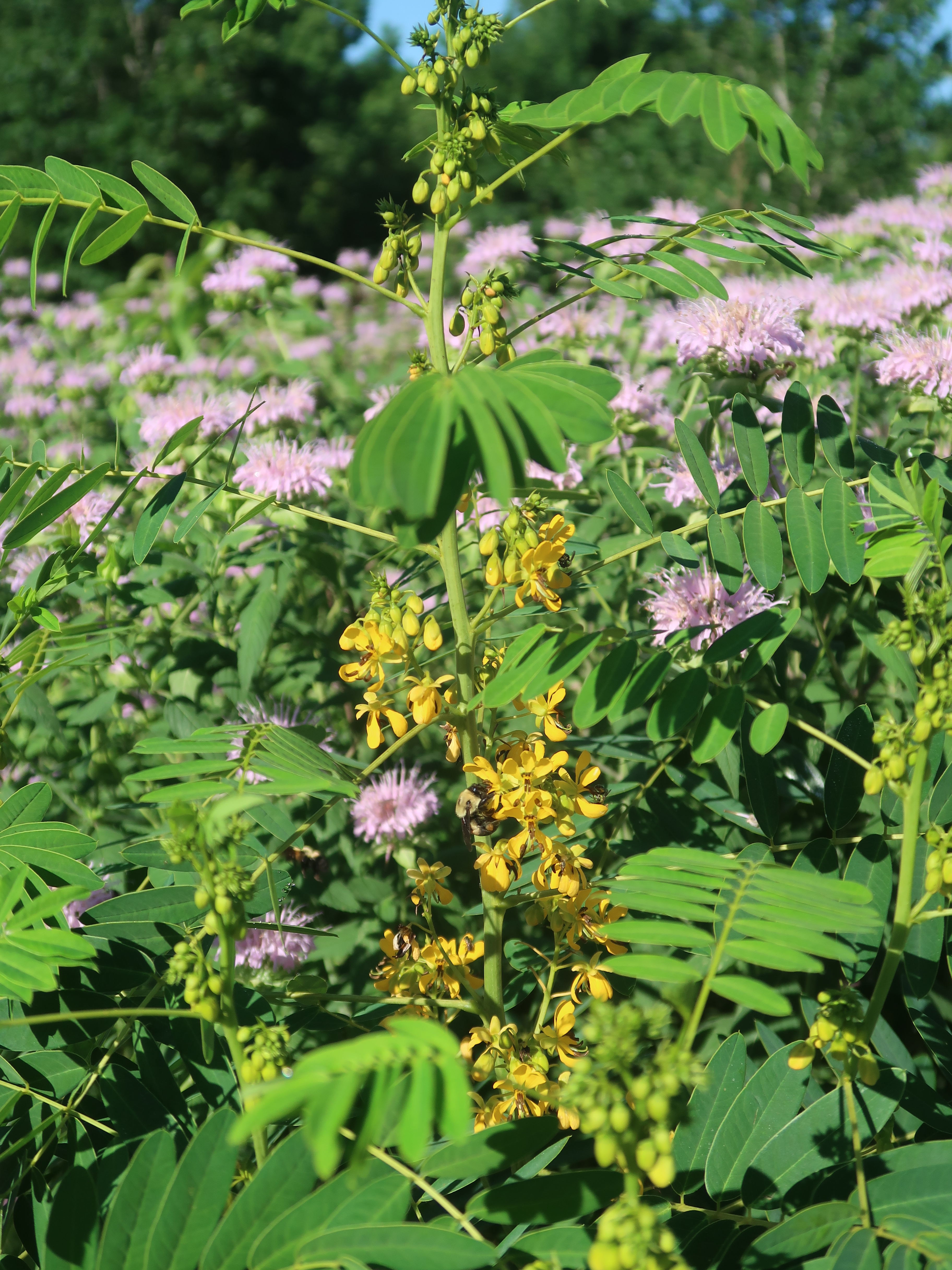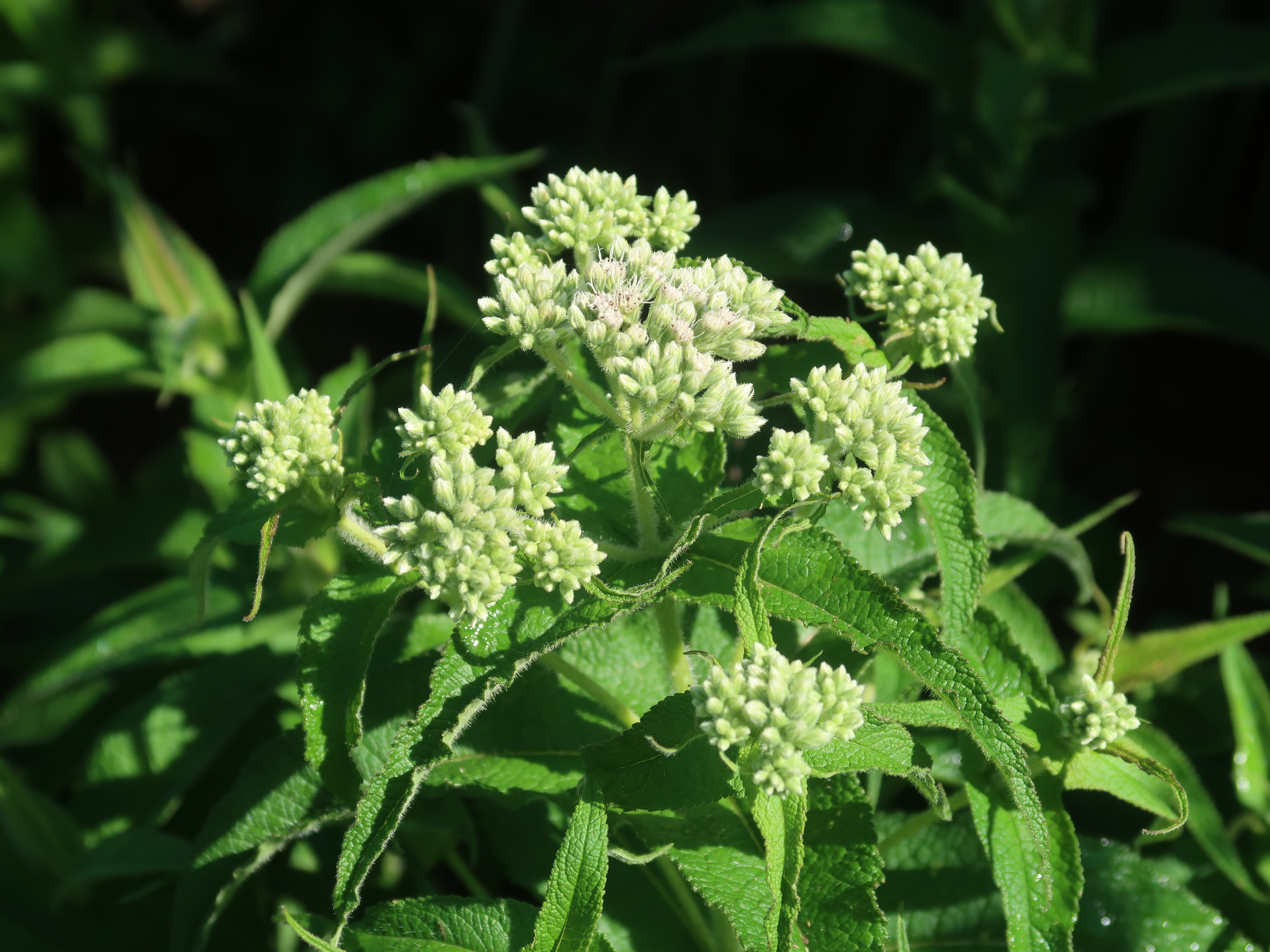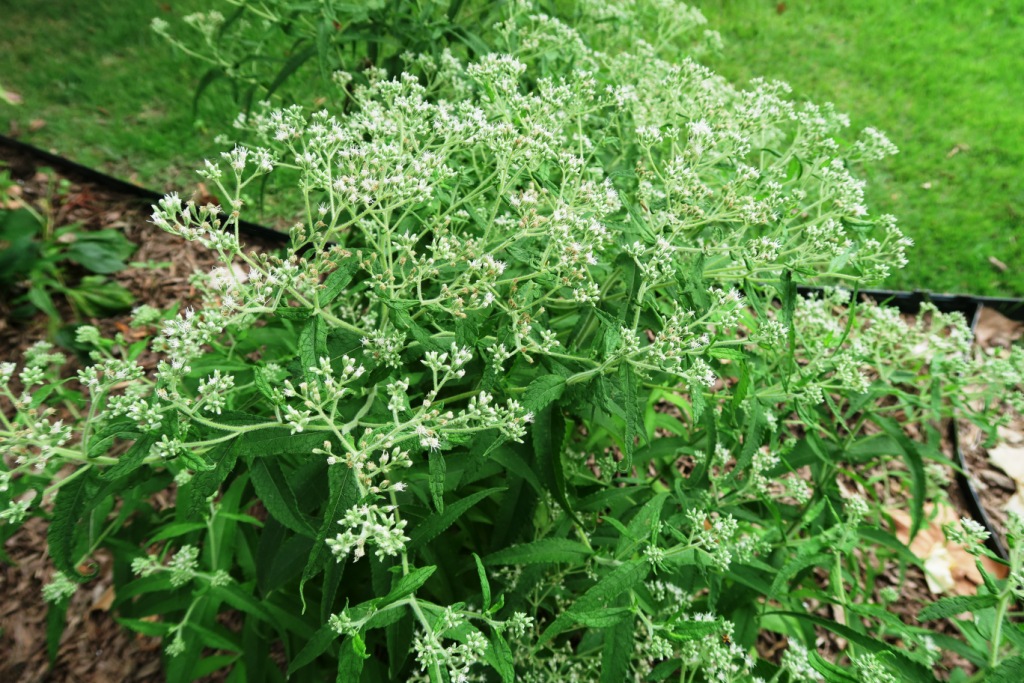Hypericum – St. John’s Wort – also occasionally called Aaron’s beard, is a genus of plants that have been used since medieval times for a wide array of folk medicines and wound dressings. It is currently sold in health food stores to treat depression. The plants were supposedly gathered and burned to ward off evil spirits on the eve of St. John’s Day – thus the common name St. John’s wort. There are about 400 species of hypericum world-wide, but the two most commonly sold in Arkansas are a shrubby form (H. prolifucum)
and a groundcover form (H. calycinum).
They have showy yellow blooms which bloom most of the summer in full sun to partial shade. Some newer varieties are bred to retain showy seed pods after bloom
(you often see them in cut flower arrangements). It is native to central and eastern North America.
Wild Senna – Senna hebecarpa
is a native perennial member of the pea family. Also sometimes called American senna, it has showy yellow flowers that bloom all summer.
It needs at least 6 hours of sunlight a day and likes moist areas, but with good drainage. It is a popular plant for bees and butterflies and is a host plant for the Sulphur butterflies.
Boneset – Eupatorium perfoliatum
is a perennial native that that blooms from mid-summer through fall. It produces flat clusters of white flowers.
It does best in full sun to partial shade, but is adaptable to a wide range of soil moisture –from fairly dry to very wet locations. It occurs naturally in a variety of moist habitats, including marshes, swales, wet fields, thickets, low clearings, and on river and stream banks.

